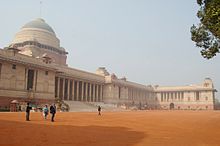India is emerging as one of Asia’s most unrecognised - and underrated - gambling markets.

Consultancy Global Market Advisors, which specialises in the gaming, tourism and hospitality markets, says that India has the potential to become a US$10bn annual legal gaming market.
While everyone’s attention is fixed on China and other Asian gambling markets, the prospects of India are being largely overlooked, says Kit Szybala, GMA’s director of research and analysis.
India, already larger than Russia in terms of gross domestic product, is beginning to attract attention from casino operators and investors. They are looking at the country’s expanding middle class of around 260 million people which is expected to double by 2025. Middle class, in this respect, is considered to be those earning between US$2,000 and $21,000 annually.
There are only two legal casino markets in India: Goa, the former Portuguese colony, and Sikkim. Goa has 15 casinos but live table games are only permitted on floating casinos located off-shore just outside of the limit, while Sikkim is a state in the Himalayas with two casinos. In Goa locals are not permitted to play but its market is reckoned to be worth US$76m last year.
There have been attempts to open casino markets in other states, notably Daman and Dui (where one licence has been issued) and the Mumbai state of Maharashtra. But gambling revenue in the entire country is estimated to be US$60bn, including sports betting, online gaming and card games.
Some Indians go to Sri Lanka to play in casinos or to Nepal in the far north that is an expanding market. Meanwhile, Indians account for a high percentage - inside the top 10 - of visitors to Macau and Las Vegas and there is a sizeable Indian presence in the Singapore casinos.

